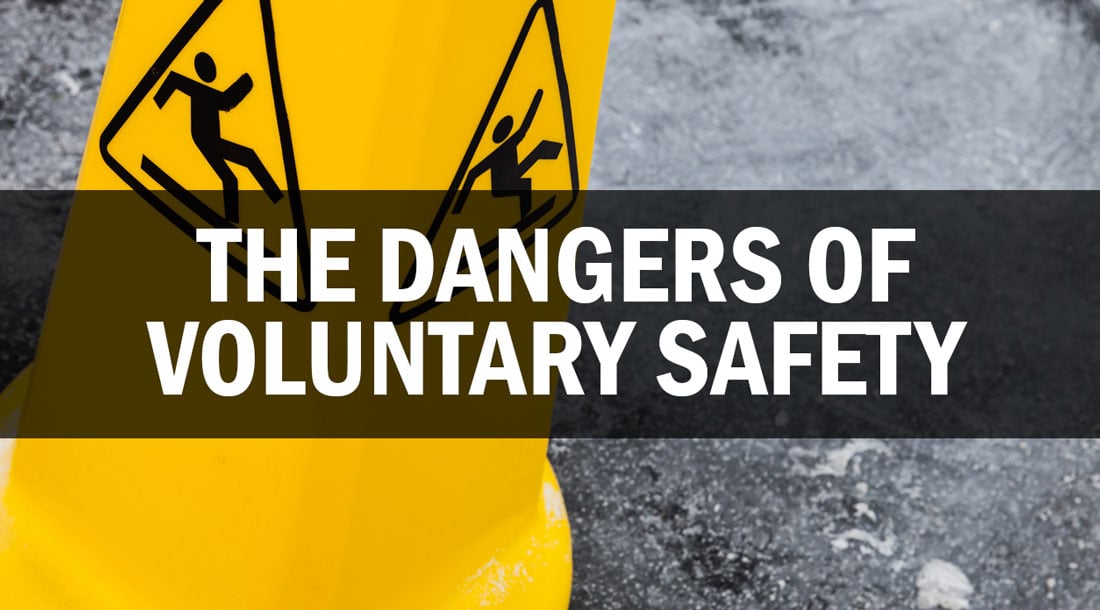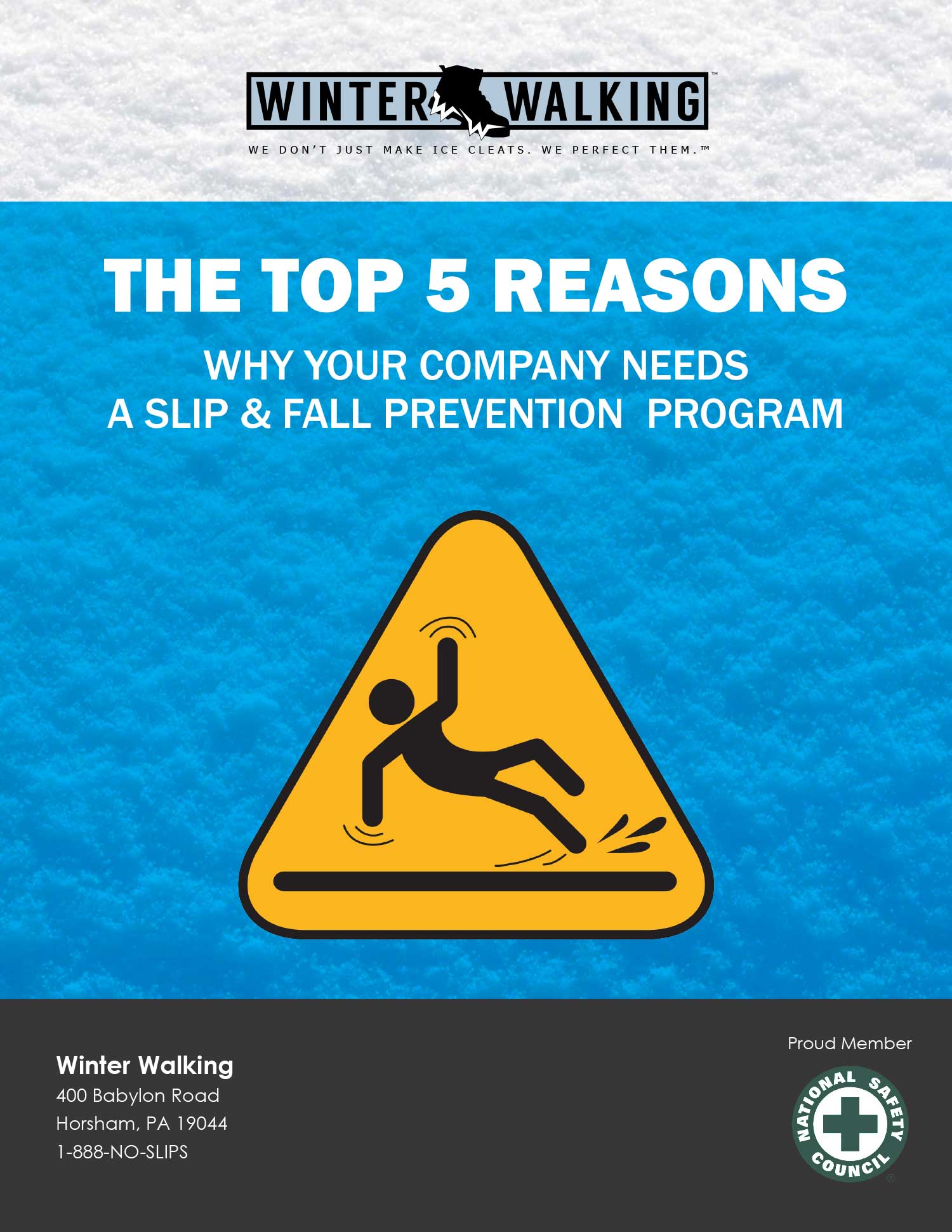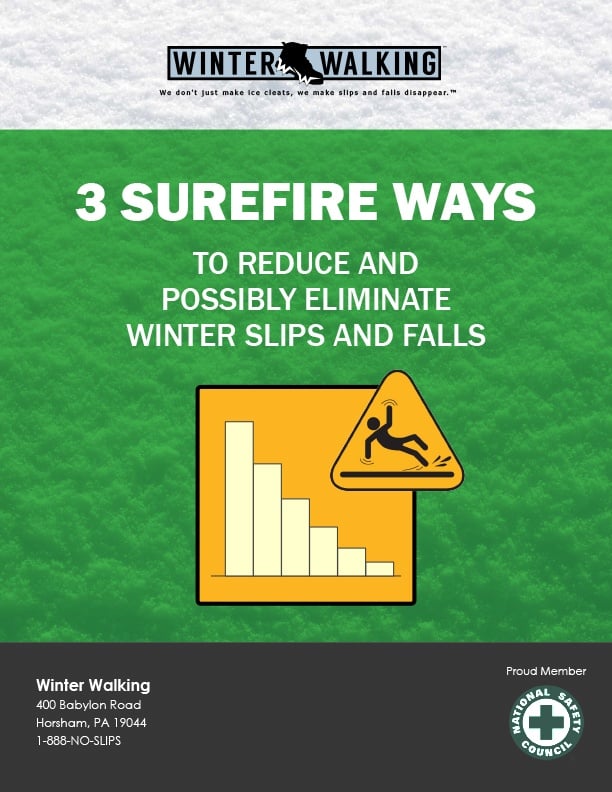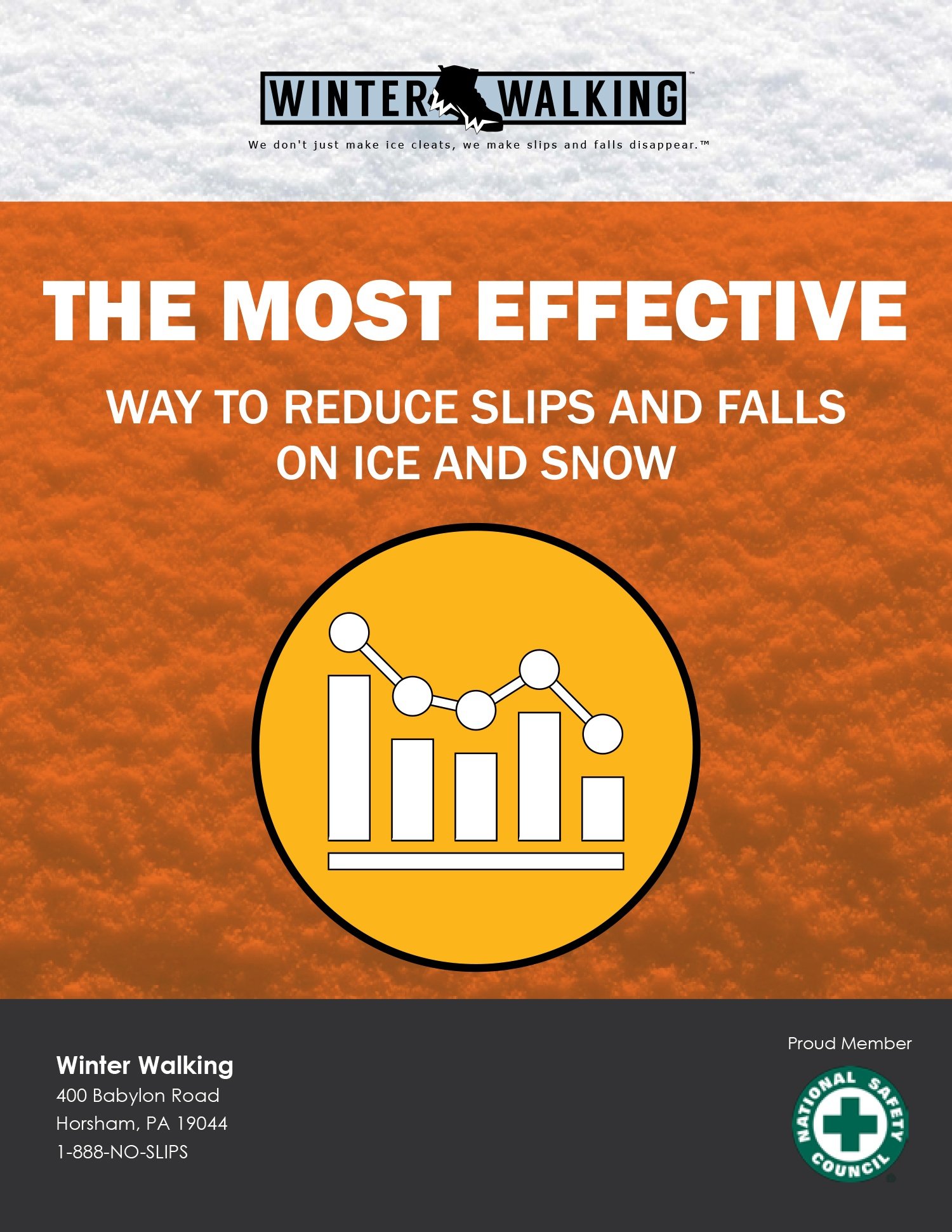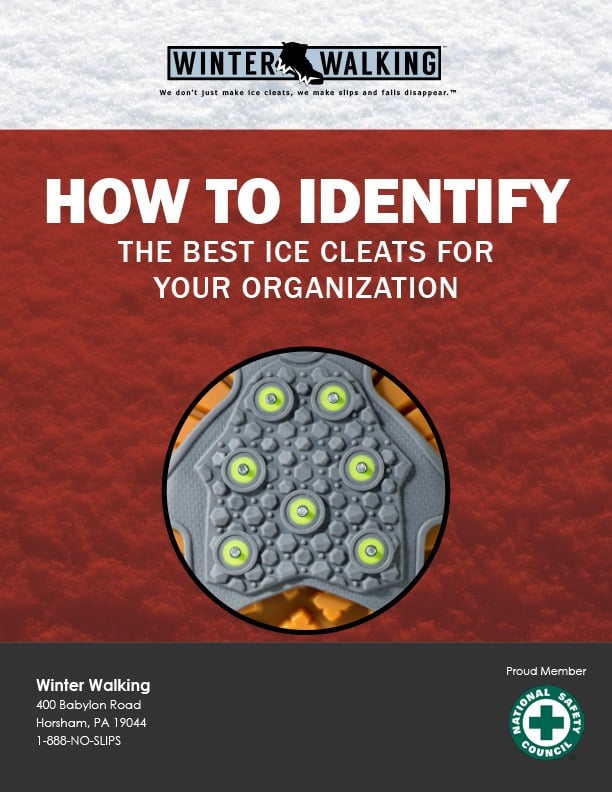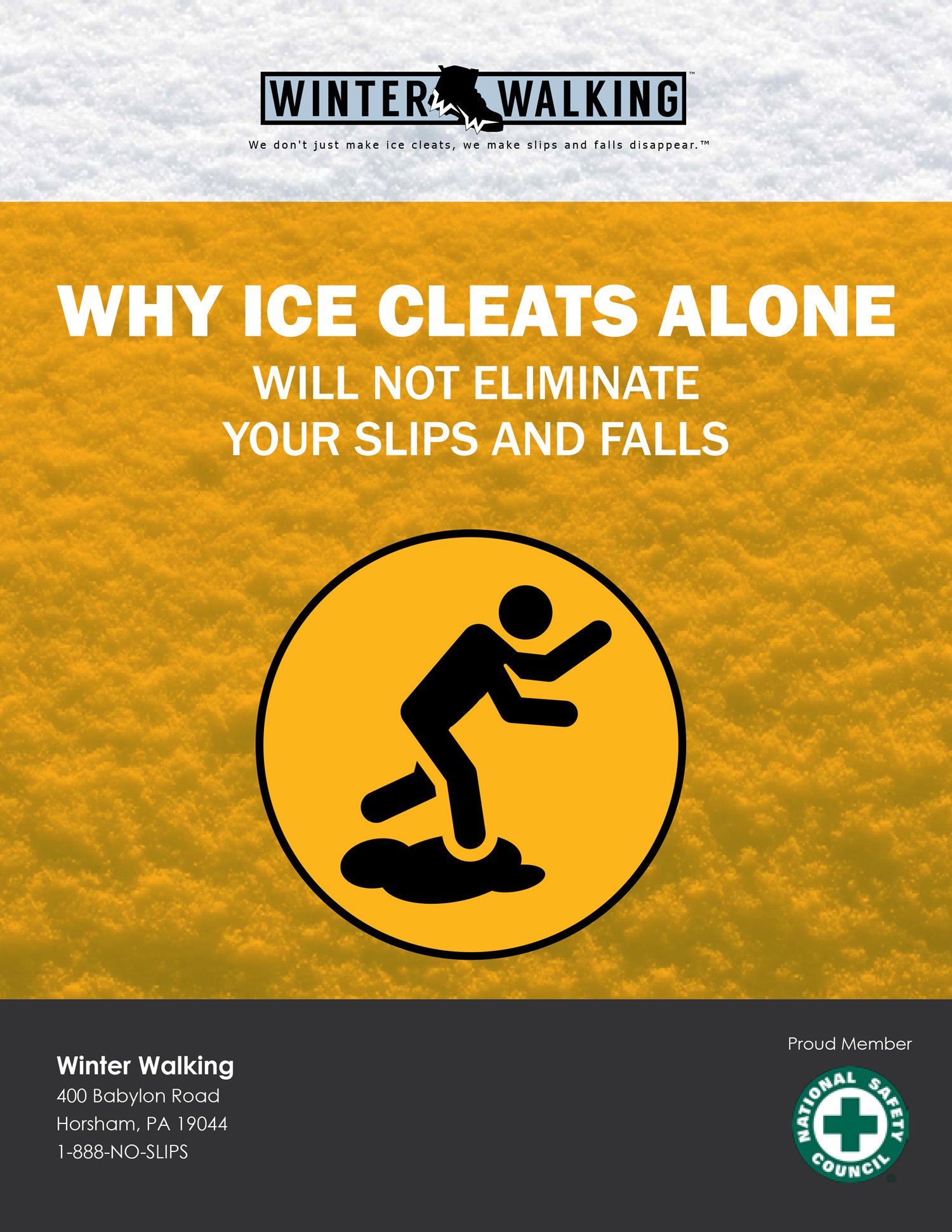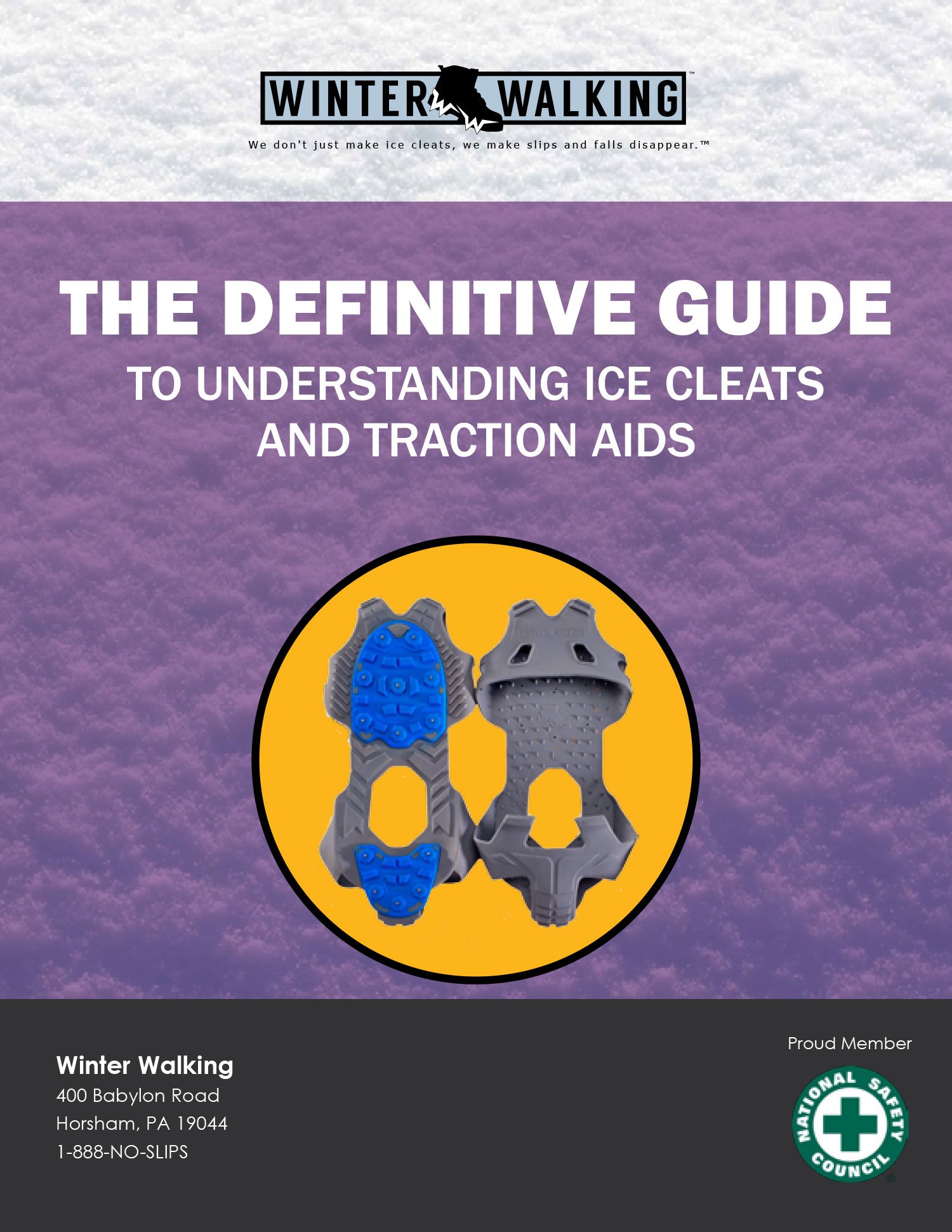I’ve found that there are two ways people tend to look at ice cleats.
- Ice cleats are a last resort.
- Ice cleats are part of the workplace safety gear solution.
Let me ask you a question: Why are your employees using the Personal Protective Equipment (PPE) they have today? Chances are, your company has a lot of PPE that are mandatory, not voluntary, as a condition of employment. What about safety glasses, hard hats, steel-toe boots, high-visibility clothing, fire-retardant apparel? You get my point.
These items are mandatory at most workplaces, including yours. Why? Because your employees experienced injuries (perhaps a lot of them) and someone made the connection between those injuries and the financial burden to the company. Then, an executive decision was made that this situation needed to stop and the PPE expenditure was approved.
Here are a few examples:-
Your employees’ fingers kept getting cut on sharp objects. Someone realized that proper safety gloves could prevent that. So what did your company do? Mandate usage.
-
Your employees were breaking their toes when heavy objects fell on feet. Steel-toe boots were identified as a solution to the problem. So what did your company do? Mandate usage.
-
Your employees were subjected to eye injuries. It was determined that safety glasses could remedy the situation. So what did your company do? Yes, again they mandated usage.
Look at it this way. If you’re a parent, do you ask your children “if” they want to brush their teeth? No, you tell them. I make my children brush their teeth twice a day because I have their well-being in mind.
A similar thing is true in the workplace. If you give employees the option to stop wearing mandatory PPE like snow spikes for boots, how many would stop vs. continue using the equipment? And what happens next? You guessed it. Accidents and injuries increase. And your safety record plummets.
Today, nearly every large, successful company is “chasing zero” when it comes to workplace accidents. So, how are you going to get there if you’re giving employees the power to decide to work safe or not? It just leads to increased accident and injury rates, lowered productivity, and ever-increasing costs.
So the next time you think about safety footwear, remember, mandatory ice cleat programs have the ability to reduce winter slips and falls on snow and ice by 70-100%. Imagine the health benefits. (And then imagine the cost savings!)
Thank you for reading. If you found value in this post, please consider sharing it with your LinkedIn network or simply “like” it.
Bill Coyne is the VP of Sales for Winter Walking. He has been helping organizations across a wide variety of business sectors prevent workplace slips and falls in ice and snow for over 14 years. Winter Walking currently helps some of the world’s largest organizations keep their employees both safer and more productive while working outdoors in the winter season. Contact bill@winterwalking.com or visit www.winterwalking.com.

